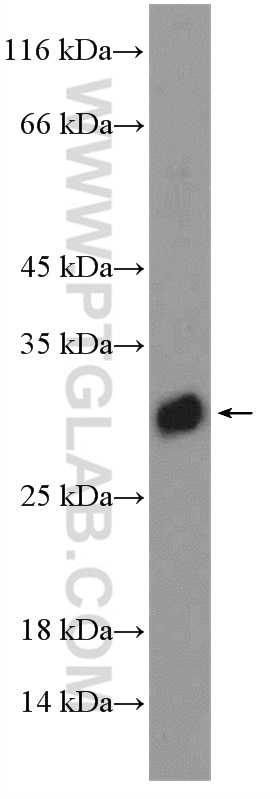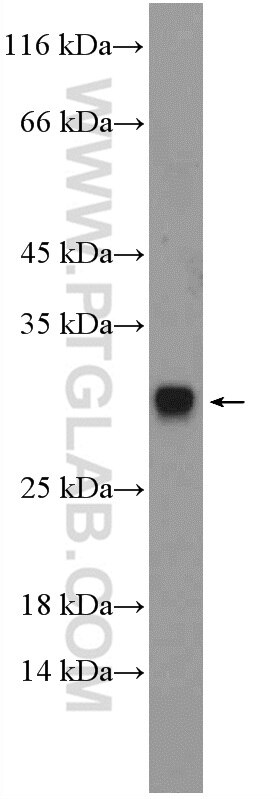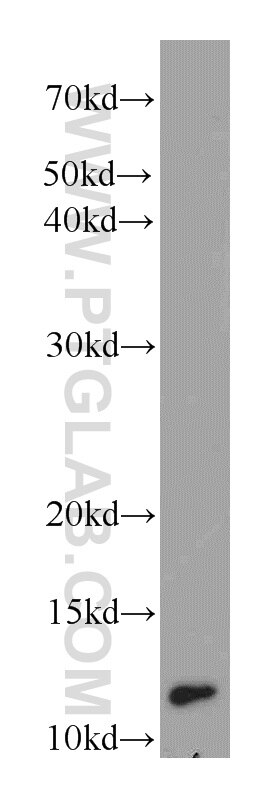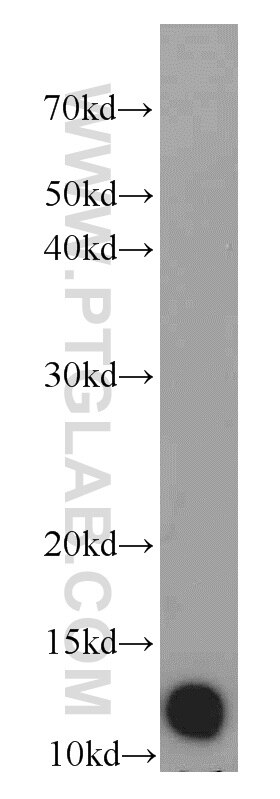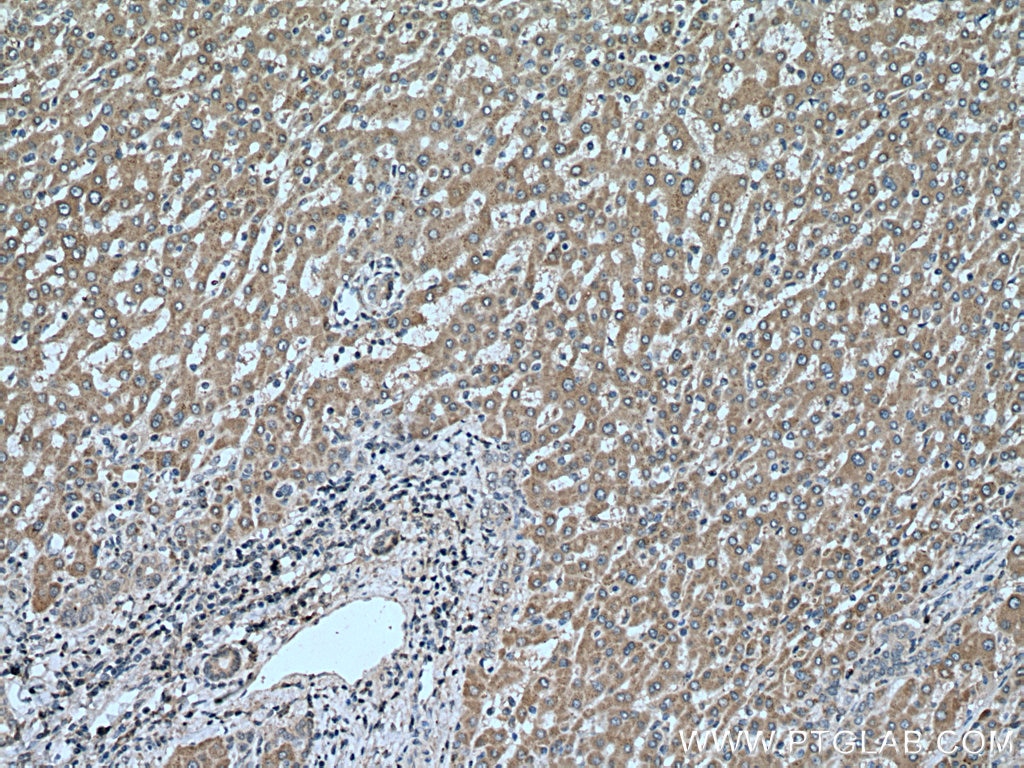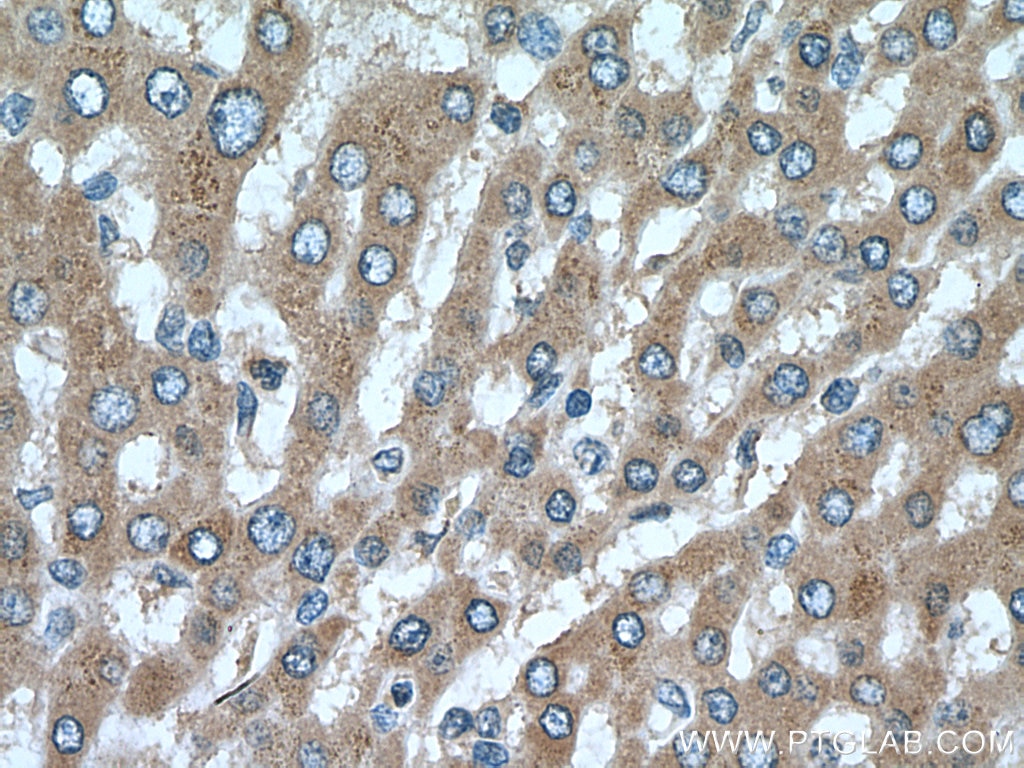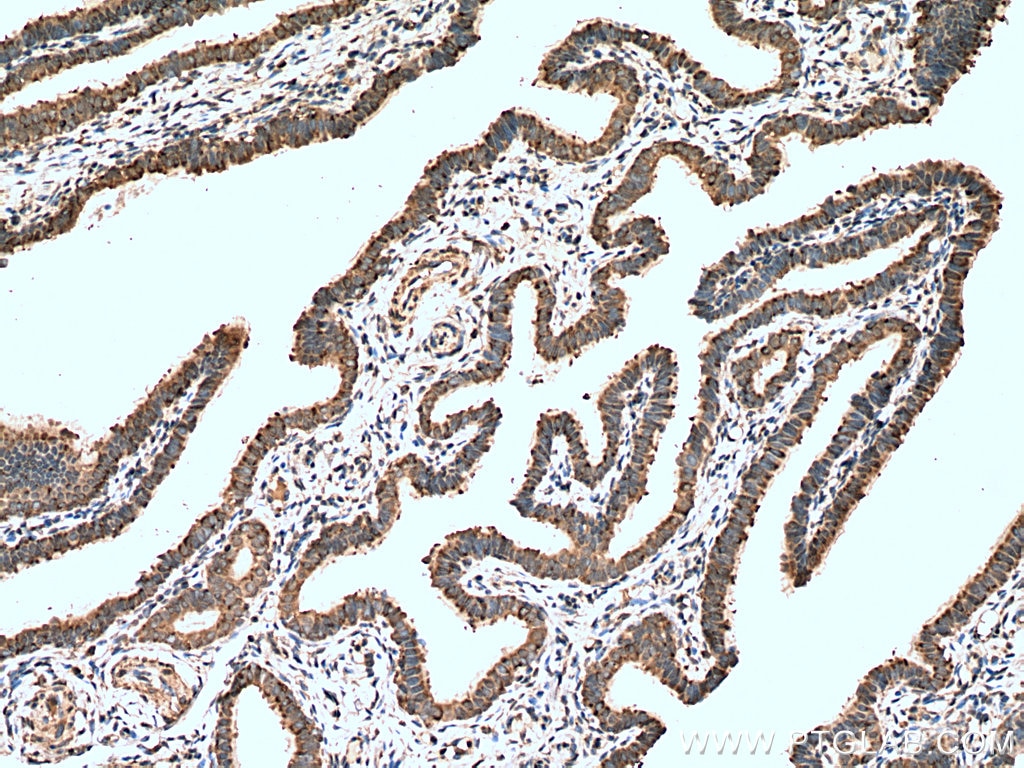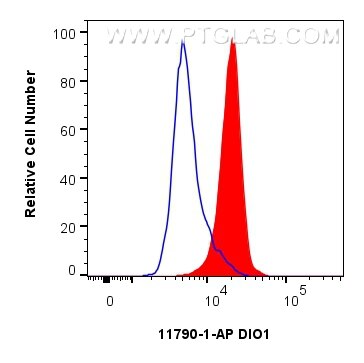DIO1 Polyklonaler Antikörper
DIO1 Polyklonal Antikörper für WB, IHC, IF/ICC, FC (Intra), ELISA
Wirt / Isotyp
Kaninchen / IgG
Getestete Reaktivität
human, Maus, Ratte
Anwendung
WB, IHC, IF/ICC, FC (Intra), ELISA
Konjugation
Unkonjugiert
Kat-Nr. : 11790-1-AP
Synonyme
Geprüfte Anwendungen
| Erfolgreiche Detektion in WB | Mauslungengewebe, A549-Zellen, HeLa-Zellen, Maus-Eierstockgewebe, Rattenlungengewebe, U-937-Zellen |
| Erfolgreiche Detektion in IHC | humanes Leberkarzinomgewebe, humanes Nierengewebe, humanes Ovarialkarzinomgewebe Hinweis: Antigendemaskierung mit TE-Puffer pH 9,0 empfohlen. (*) Wahlweise kann die Antigendemaskierung auch mit Citratpuffer pH 6,0 erfolgen. |
| Erfolgreiche Detektion in IF/ICC | A549-Zellen |
| Erfolgreiche Detektion in FC (Intra) | HeLa-Zellen |
Empfohlene Verdünnung
| Anwendung | Verdünnung |
|---|---|
| Western Blot (WB) | WB : 1:500-1:2000 |
| Immunhistochemie (IHC) | IHC : 1:50-1:500 |
| Immunfluoreszenz (IF)/ICC | IF/ICC : 1:50-1:500 |
| Durchflusszytometrie (FC) (INTRA) | FC (INTRA) : 0.25 ug per 10^6 cells in a 100 µl suspension |
| It is recommended that this reagent should be titrated in each testing system to obtain optimal results. | |
| Sample-dependent, check data in validation data gallery | |
Veröffentlichte Anwendungen
| WB | See 11 publications below |
| IHC | See 3 publications below |
| IF | See 2 publications below |
Produktinformation
11790-1-AP bindet in WB, IHC, IF/ICC, FC (Intra), ELISA DIO1 und zeigt Reaktivität mit human, Maus, Ratten
| Getestete Reaktivität | human, Maus, Ratte |
| In Publikationen genannte Reaktivität | human, Maus, Ratte |
| Wirt / Isotyp | Kaninchen / IgG |
| Klonalität | Polyklonal |
| Typ | Antikörper |
| Immunogen | DIO1 fusion protein Ag2410 |
| Vollständiger Name | deiodinase, iodothyronine, type I |
| Berechnetes Molekulargewicht | 249 aa, 29 kDa |
| Beobachtetes Molekulargewicht | 29 kDa, 13 kDa |
| GenBank-Zugangsnummer | BC017955 |
| Gene symbol | DIO1 |
| Gene ID (NCBI) | 1733 |
| Konjugation | Unkonjugiert |
| Form | Liquid |
| Reinigungsmethode | Antigen-Affinitätsreinigung |
| Lagerungspuffer | PBS with 0.02% sodium azide and 50% glycerol |
| Lagerungsbedingungen | Bei -20°C lagern. Nach dem Versand ein Jahr lang stabil Aliquotieren ist bei -20oC Lagerung nicht notwendig. 20ul Größen enthalten 0,1% BSA. |
Hintergrundinformationen
DIO1(Type I iodothyronine deiodinase) is also named as ITDI1, TXDI1,5DI,DIOI and belongs to the iodothyronine deiodinase family.It is a membrane selenoprotein that catalyzes the deiodination of L-thyroxine to the biologically active thyroid hormone 3,3′,5-triiodothyronine.DIO1 is located in liver, kidney, and thyroid,which has both ORD and IRD activities(PMID: 9389495). It has some isoforms produced by alternative splicing with the MW of 29 kDa, 21 kDa, 13 kDa, 23 kDa, 19 kDa, 4 kDa, 13 kDa, 9 kDa and 10 kDa.
Protokolle
| PRODUKTSPEZIFISCHE PROTOKOLLE | |
|---|---|
| WB protocol for DIO1 antibody 11790-1-AP | Protokoll herunterladen |
| IHC protocol for DIO1 antibody 11790-1-AP | Protokoll herunterladenl |
| IF protocol for DIO1 antibody 11790-1-AP | Protokoll herunterladen |
| STANDARD-PROTOKOLLE | |
|---|---|
| Klicken Sie hier, um unsere Standardprotokolle anzuzeigen |
Publikationen
| Species | Application | Title |
|---|---|---|
Cell Rep Environmental Enrichment Induces Pericyte and IgA-Dependent Wound Repair and Lifespan Extension in a Colon Tumor Model. | ||
Chemosphere Rno-miR-224-5p contributes to 2,2',4,4'-tetrabromodiphenyl ether-induced low triiodothyronine in rats by targeting deiodinases. | ||
J Biol Chem Astrocyte Elevated Gene-1 (AEG-1) Contributes to Nonthyroidal Illness Syndrome (NTIS) Associated with Hepatocellular Carcinoma (HCC). | ||
Sci Rep Sex-specific transgenerational effects on murine thyroid gland imposed by ancestral exposure to neonicotinoid thiacloprid | ||
Sci Rep Selenocysteine insertion sequence binding protein 2 (Sbp2) in the sex-specific regulation of selenoprotein gene expression in mouse pancreatic islets. | ||
Front Physiol Caloric restriction induces energy-sparing alterations in skeletal muscle contraction, fiber composition and local thyroid hormone metabolism that persist during catch-up fat upon refeeding. |
